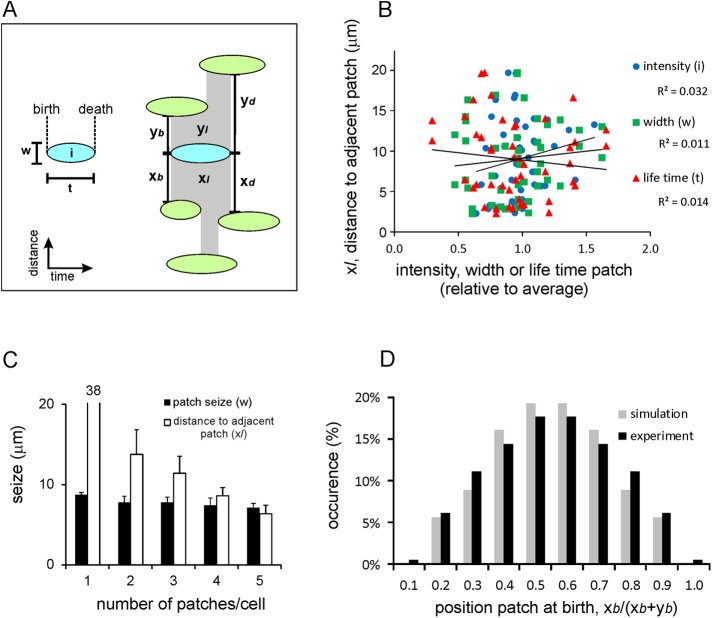FIGURE 2:
Ras-GTP patches are not strongly influenced by neighboring patches. (A) Schematic of measurements. Left, a patch has a width w, lifetime t, intensity i, and given times of birth and death. Right, a patch is embedded by adjacent patches and has distances x and y to the adjacent patch to the right and left, respectively; these are measured at the times of birth (xb and yb) during life (xl and yl) and at the times of death (xd and yd) for the patch. (B) Lack of correlation between lifetime, width, or intensity of a patch and the distance to the adjacent patch (n = 23). All R2 values are very low and do not support a significant correlation. (C) A cell may have one or multiple Ras-GTP patches and patch-free spaces. The width of a Ras-GTP patch is independent of the number of other patches present; instead, patch-free spaces become smaller when more patches are present. Data are means and SEM from 50 patches. (D) Probability distribution of the appearance of a new Ras-GTP patch relative to the position of the two adjacent patches; at the moment of birth of a new patch, we measured distances xb and yb to the adjacent patches (data from 90 experimental Ras-GTP patches and 124 model R patches). The results show that a new Ras-GTP patch frequently starts somewhere in the middle of the open space between two patches. The data include cells with a single existing patch, where xb and yb represent the distances of the new patch to the right and left sides of that existing patch; the new patch preferentially appears at the opposite side of the existing patch. See Supplemental Figure S1 for other properties of Ras-GTP patches.

